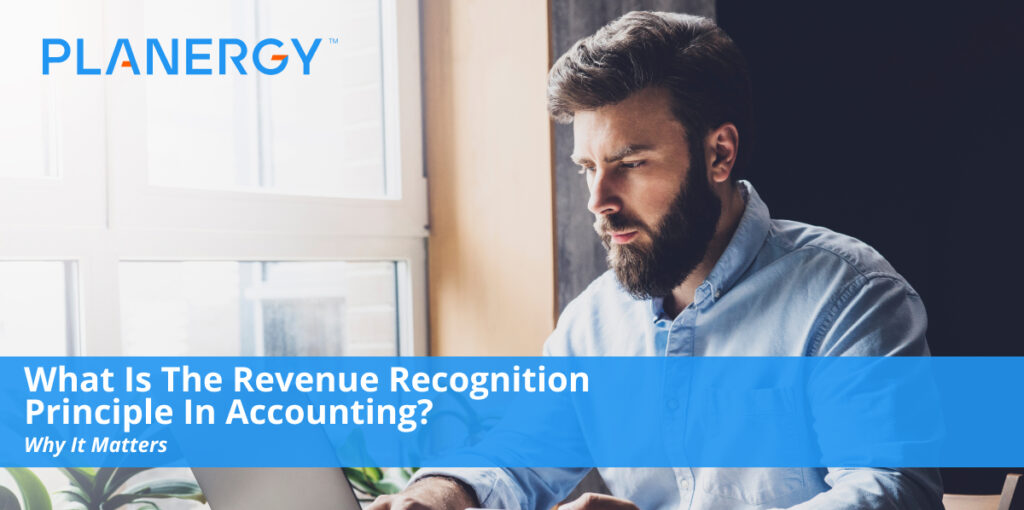Revenue recognition, according to the Generally Accepted Accounting Principle (GAAP), is the condition under which revenue is recognized and provides a way to account for it and financial statements when using the accrual basis of accounting, as required for all public companies.
Businesses that use the cash basis of accounting, like many small businesses, do not have to follow this principle when they record revenue.
Generally, revenue is recognized when a critical event has occurred and the dollar amount is easily measurable. The GAAP makes the revenue recognition principle sound simpler than it actually is.
Revenue is what keeps businesses flowing as everything relates back to the sale. because of this, Regulators are highly familiar with how some companies may be tempted to push the limits on what qualifies as revenue.
This is especially the case when not all revenue is collected as the work is completed. For instance, attorneys charge their clients in billable hours and provide an invoice after the work is finished. Construction managers often bill their clients on the percentage-of-completion method.
Revenue accounting is pretty straightforward when a product is sold in the revenue is recognized as the customer pays for the product.
But when it comes to accounting for revenue when a company takes a long time to produce the product, things can get complicated, fast. and because of this, there are a variety of situations where exceptions to the revenue recognition principle are present.
Financial analysts prefer that the revenue recognition policies for one company are the standard for the entire industry because it helps to ensure there is an even comparison between two companies. It makes it easier when reviewing line items on an income statement.
Revenue recognition principles within an organization should remain constant over time so that historical financial can easily be analyzed and reviewed for inconsistencies for seasonal trends.
The revenue recognition principle is a feature of accrual accounting. It requires that revenues are recognized on the income statement in the. When they are realizing earned rather than when the cash is received.
For a transaction to be realizable, it means the goods or services have been received by the customer but the payment for said good or service is expected at a later date. Earned Revenue accounts for goods or services that have been provided or performed.
This means the revenue-generating activity must be essentially complete or fully complete for it to be included in the revenue for the respective accounting period. There has to be a reasonable level of certainty that the earned revenue payment will be received and according to the matching principle, the revenue and its associated costs have to be reported in the same accounting period.
Revenue Recognition Methods
Businesses have several options to choose from when it comes to revenue recognition methods. The key, however, is that once a revenue recognition method has been chosen, the business has to continue using it.
Sales Basis Method
With the sales basis revenue recognition method, revenue is recorded at the time of sale. The sale is defined as the period of time where the goods and services change hands, which may or may not occur at the same time as payment.
For instance, if a customer were to make an upfront payment before receiving delivery of the product, the revenue isn’t recognized until they receive the product.
Percentage of Completion Method
The percentage of completion method, also known as the completion method, is most often used in long-term projects. Any services like construction or engineering use this method.
These service providers have to be able to show they’re earning revenue despite the fact that their projects aren’t right finished.
This method can only be used when both of the following conditions are met:
- A long-term contract, enforceable by law, is in place.
- The project is set up in such a way that the percentage of completion can be estimated for the allocation of revenue and expenses.
The percentage of completion method can be calculated two ways:
- Revenue can be recognized at certain milestones, such as a specific number of pages for a website, or a certain amount of square feet for a building.
- It can also be calculated based on cost. For instance, if an organization expects costs to reach $1,000,000, and they have received $400,000, then the project can be considered 40% complete.
It’s true this revenue recognition method gives businesses an alternative for long-term contracts, but it’s easy to overstate revenues if the timing for expenses and completion of work aren’t aligned properly.
Completed Contract Method
When an organization uses the completed contract method, the revenue is only recognized after the project is complete and the contract has been completely fulfilled.
This method applies to both revenue and expenses. The only time this revenue recognition method is used is when the requirements of the percentage of completion method cannot be met.
For example, if the contract is not enforceable by law, or the completion percentage can’t be calculated.
Since revenue isn’t recognized until the project is complete, the completed contract method runs the risk of under-reporting revenue at the time it is earned and overstating revenue as it is recognized.
Cost Recoverability Method
Businesses that use this method take an entirely different approach to revenue recognition.
Instead of recording revenue and offsetting the revenues by expenses, the cost recovery ability method doesn’t record any Revenue until all of the project costs are accounted for.
This method has the potential to understate revenue early while overstating revenue in the future.
Installment Method
For companies that cannot rely on their customer’s ability to pay on time, or the collectability of the payment, the installment method is usually the way to go. This approach only records the revenue when the payment has been received.
For instance, if a car sells for $10,000 on an installment plan, the revenue is only recorded when the payment is received. If a $2,000 down payment is made at the time of the initial sale, only the $2,000 is recorded. Each payment will generate revenue, which is then offset by related costs.
Accounting Standards Codification (ASC) 606
The Financial Accounting Standards Board (FASB) and the International Accounting Standards Board (IASB) joined together on May 14. 2014 to issue the ASC 606. It is similar to, but not quite the same as the International FInancial Reporting Standards (IFRS) 15.
This codification handles revenue from contracts with customers. It provides a uniform framework organizations can follow for recognizing revenue from contracts.
The previous guidance was industry-specific which created a number of fragmented policies. The updated revenue recognition standard is industry new neutral and more transparent.
The update ensures that financial statements can be effectively compared across Industries with standardized revenue recognition practices.
Steps to Satisfy the Updated Revenue Recognition Principle
Businesses must go through five steps in order to satisfy the updated Revenue recognition principle. The steps are as follows:
- Identify the contract with the customer.
- Identify the contractual performance obligations
- Determine the amount of consideration or price for the transaction
- Allocate the determined amount of consideration or price to the contractual obligations
- Recognize revenue when the performing party satisfies said performance obligation
ASC 606 details the revenue recognition principle for contracts with customers. As such, it’s an important part of procurement.
Identify the Contract with the Customer
Insecure mint, customer contracts are pretty straightforward. The price and value exchange is clearly laid out in the terms of the contract. However, the terms of the contract may change over time such as when:
You decide to change the order quantity or frequency
- The supplier can no longer provide the initially contracted product
- When add-ons are purchased
In these situations, there may not need to be an entirely new contract however, slight modifications should be made to the existing contract
Identify the Performance Obligations
Even though this may sound intimidating, it simply means outline the product or service that you are delivering to the customer for that particular period.
Determine the Transaction Price
This may be a tricky one if you don’t know exactly how much of a particular product you’re going to sell from one month to the next.
However, you should have a unit price along with any discount terms clearly outlined in the contract. You can use this information in the meantime.
If you have any kind of rewards, rebates, or anything else that may cause a customer’s contract to deviate from the standard price or payment terms, and needs to be taken into account at the beginning.
Allocate the Transaction Price to Separate Performance Obligations
this step is crucial to recognize realize the value for the service provided. In certain industries such as software-as-a-service, the product is delivered continuously so there’s no need to separate performance obligation because there is a continuous performance obligation.
If you have a continuous performance obligation, the overall building value is split and allocated to each month that falls along with the service agreement. This is similar to the completion method.
Recognize Revenue as Each Performance Obligation is Fulfilled
This is the ultimate goal where the company organization recognizes revenue. Continuing with our SaaS example, revenue is realized at the end of every billing period. It may be monthly, quarterly, or annually, depending on the terms of the customer agreement.
Under ASC 606, companies can now recognize revenue at the time when goods or services are transferred to the customer in proportion to how much has been delivered at that point.
That means you can recognize revenue each month in a quarterly contract just as you would with a monthly contract. and if a customer were to cancel it a contract, you can count the revenue for the services or products delivered up to the point of contract cancellation.
What counts as a fulfilled performance obligation?
Under ASC 606, companies have five criteria that have to be met for bills to be recognized as revenue:
- Risk and reward transfers from the seller to the buyer
- The seller has no control over the goods being sold
- The seller is reasonably sure they’ll be able to collect payment
- The amount of revenue can be reasonably measured
- The cost of earning the revenue can be reasonably measured
The consequences for non-compliance are severe. Outside of these consequences, even if you want to raise money for your company in the future, Venture capitalists and investors are going to look for companies that are compliant.
That’s why it’s always important to keep good bookkeeping records and to work with a CPA to keep records in order.




